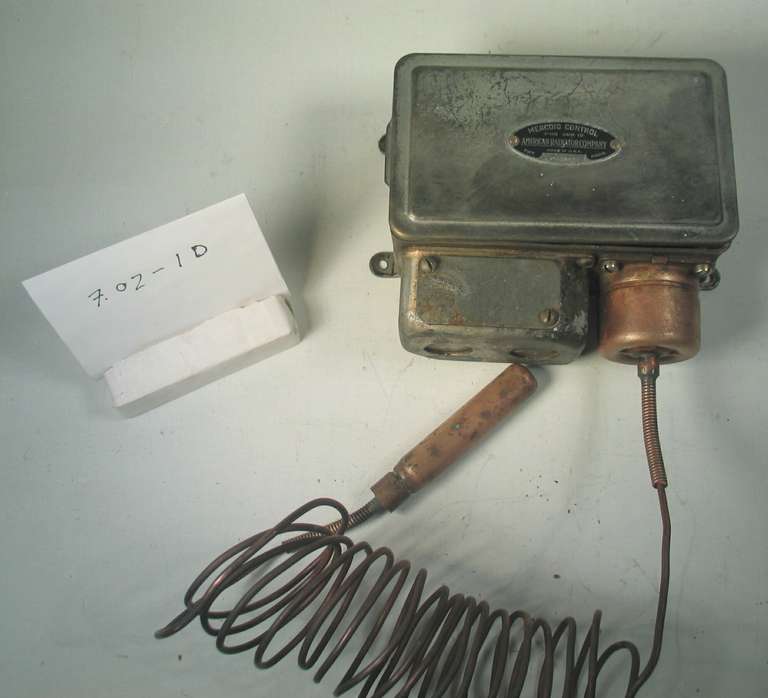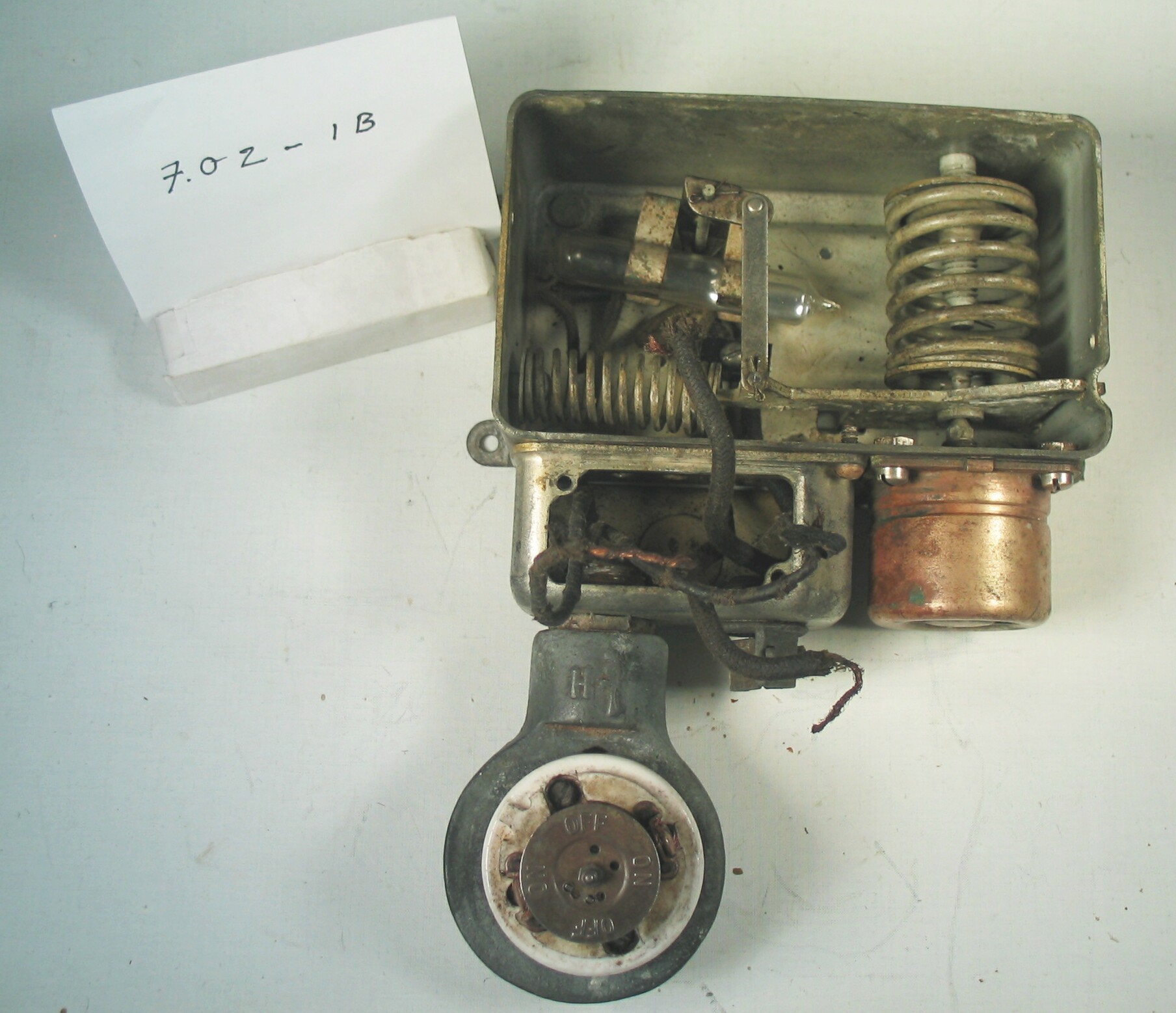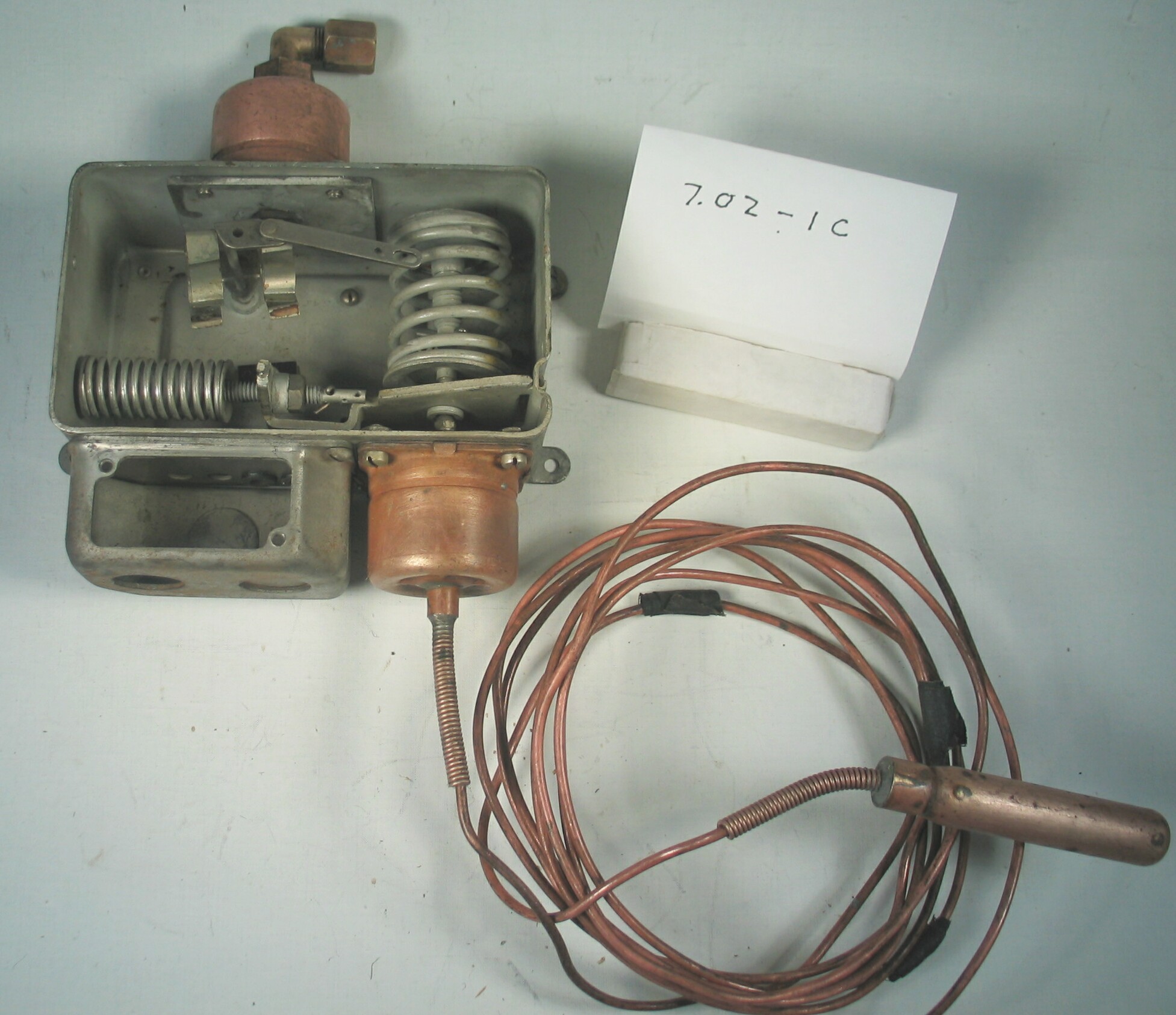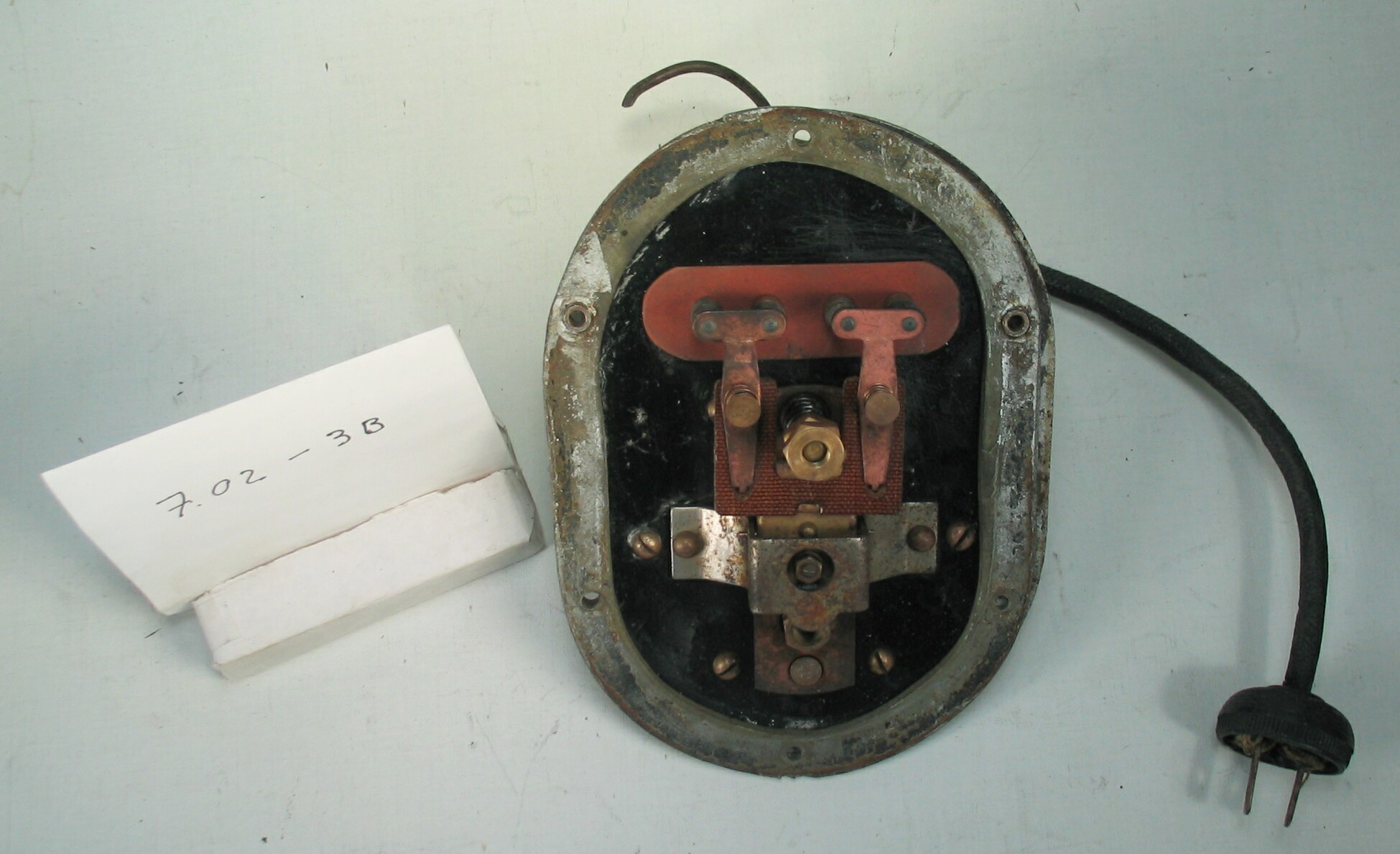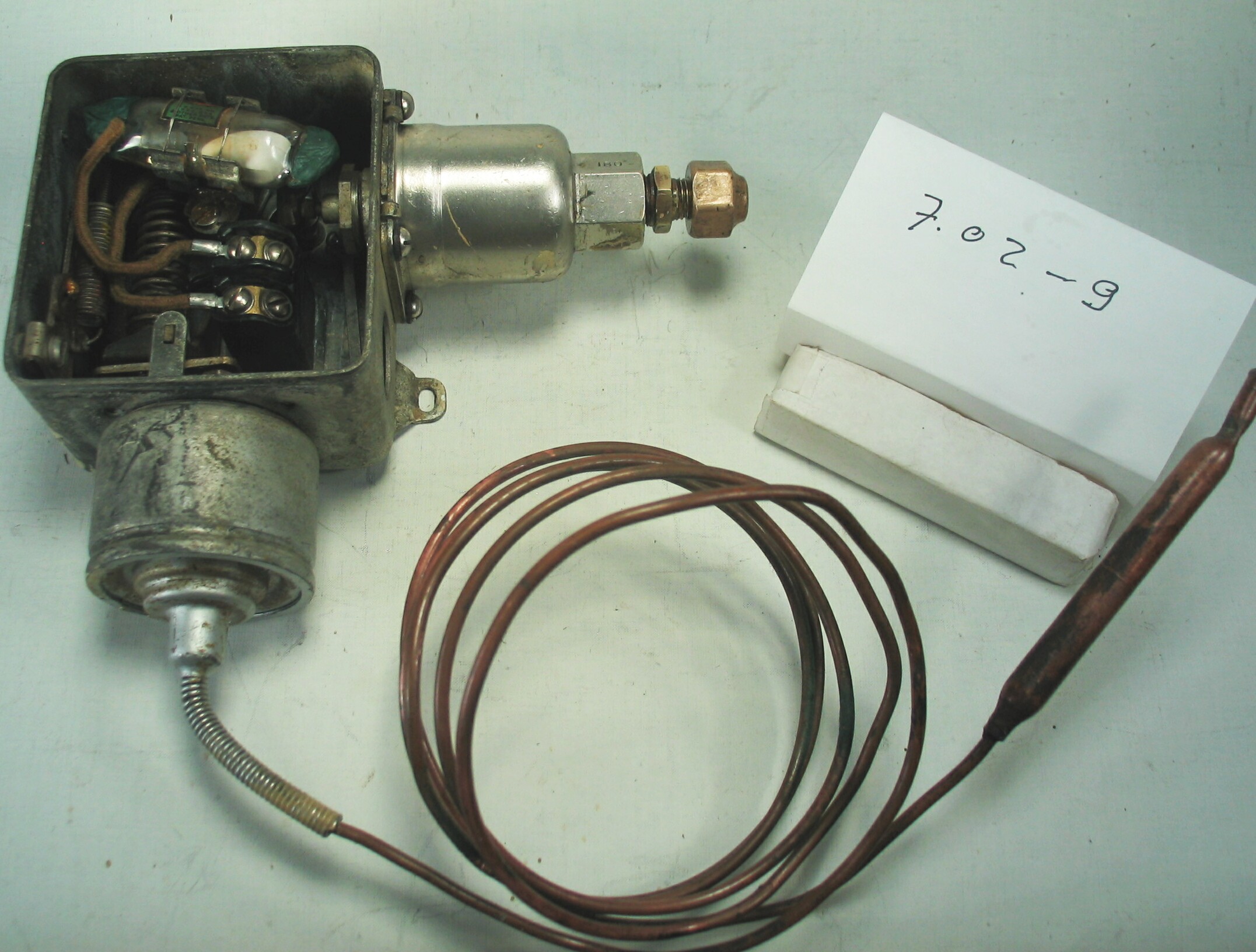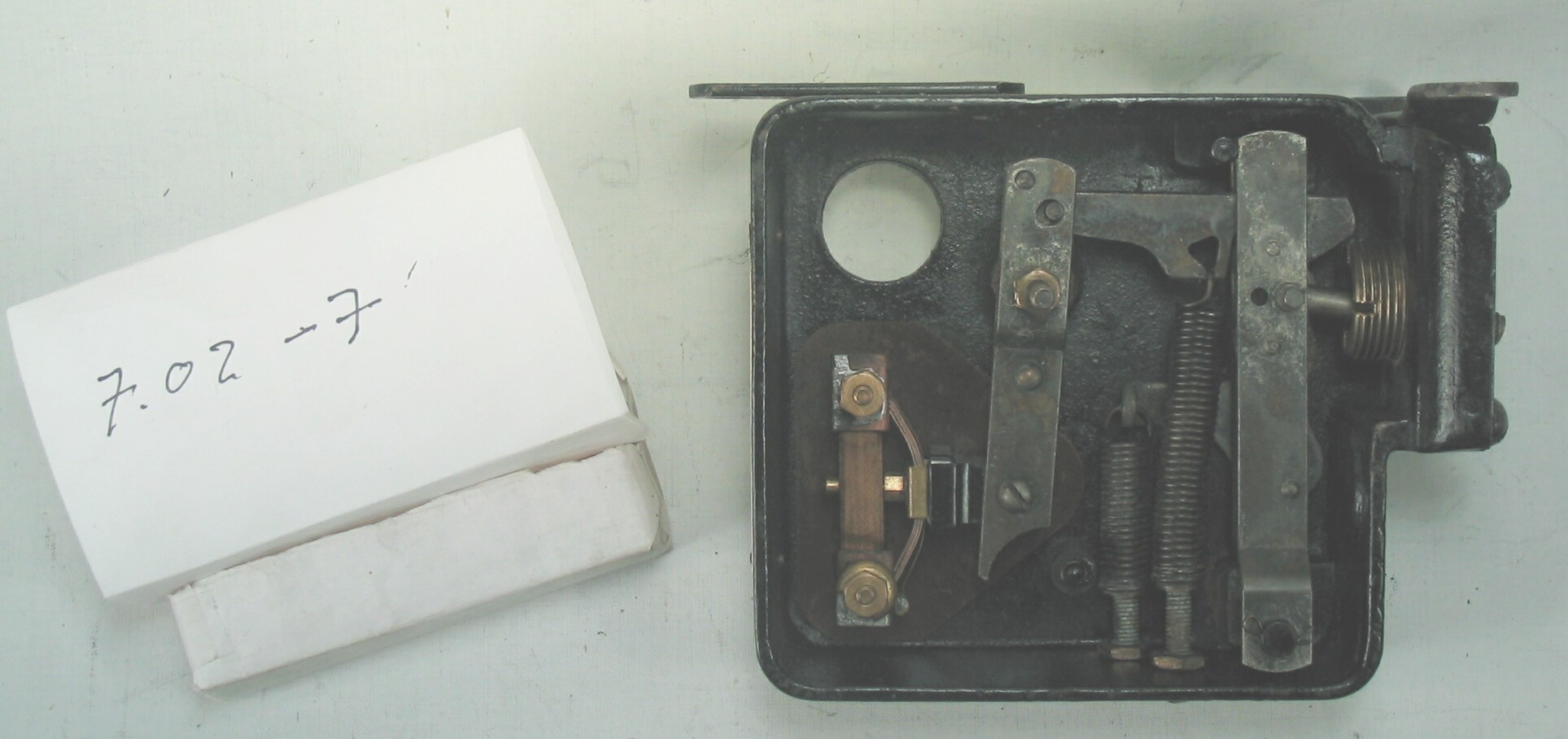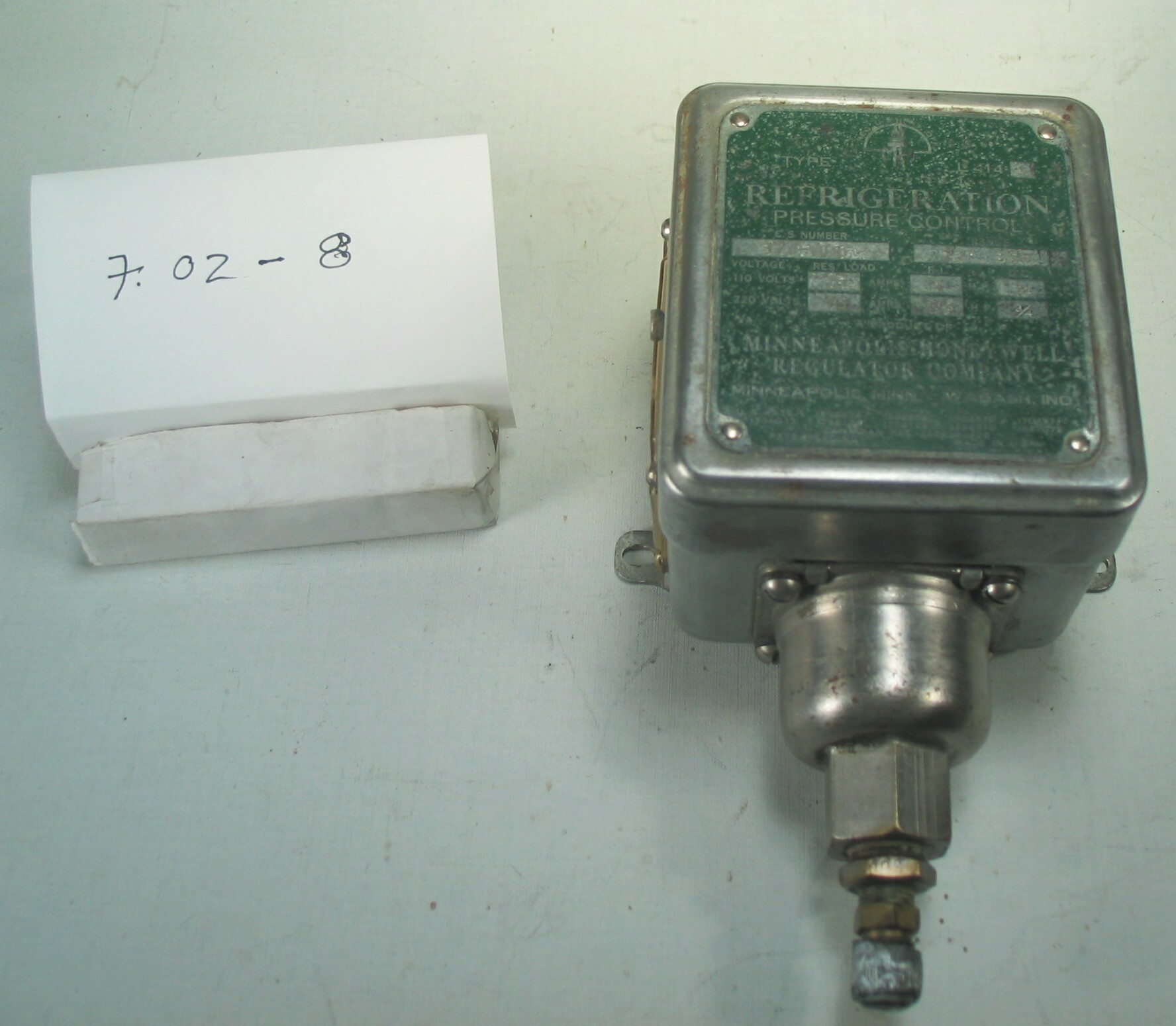7.02-1D: Mercoid 1930 Automatic Pressure-Temperature Control
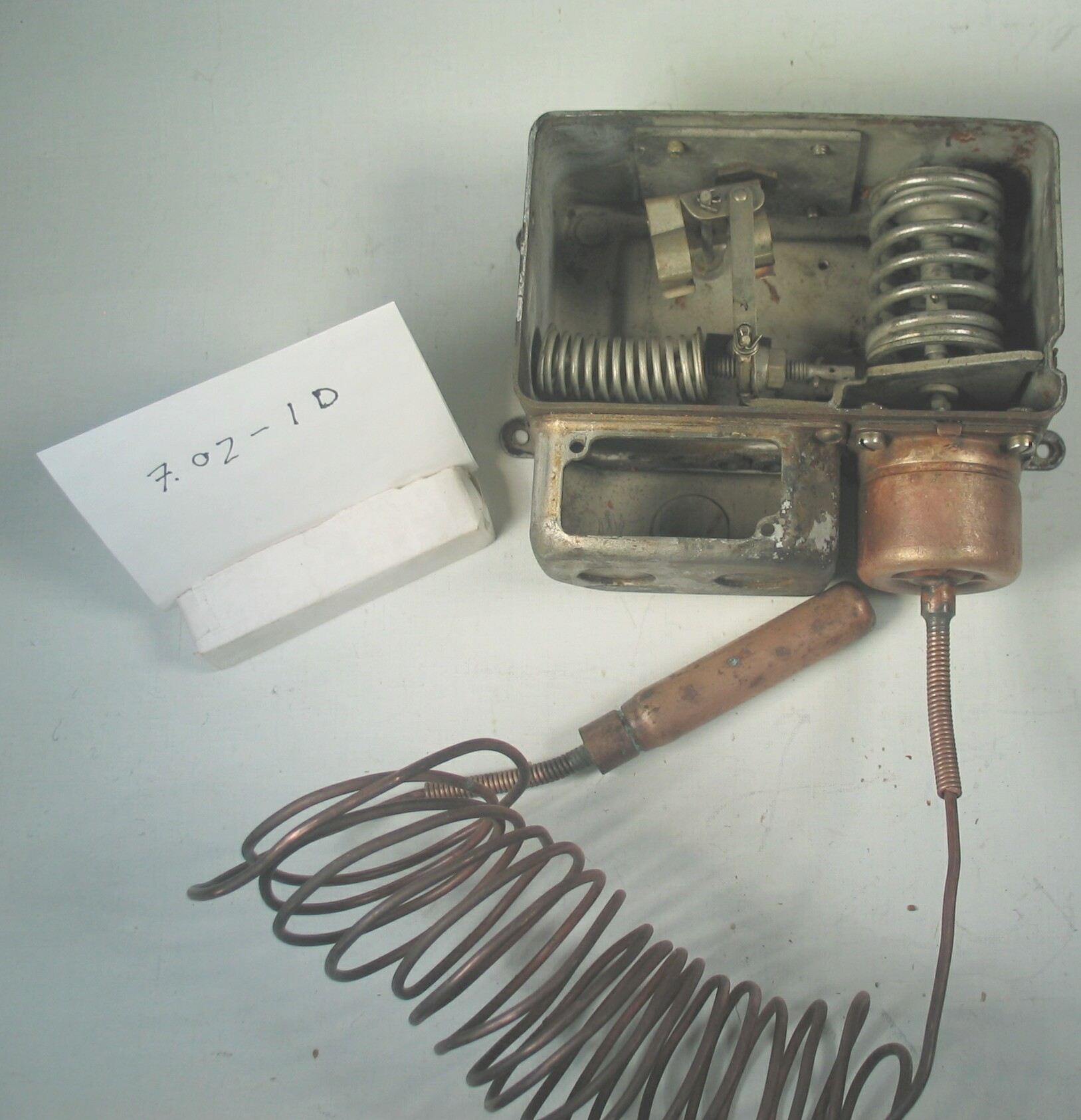
| HHCC Accession No. 2006.031 | HHCC Classification Code: 7.02-1D |
|---|
Description:
An early, commercial application, hydraulic bellows actuated, dual function, automatic pressure and temperature control, for refrigeration systems requiring extended capillary tube temperature sensing; similar to ID # 154, with tilting mercury tube and pressure bellows not included, Mercoid, 1930.
One of a matched set of similar Mercoid, early refrigeration system controllers. The set profiles a range of temperature/pressure control applications met by this pioneering manufacture, employing various design modifications made to the same basic configuration [See items ID # 153- 155].
Group:
7.02 Refrigerating and Air Conditioning Pressure and Temperature Controls - Commercial
Make:
Mercoid, American Radiator Company
Manufacturer:
Mercoid Control, American Radiator Company [See note#1]
Model:
unknown see ID #152
Serial No.:
0145440A
Size:
6 x 3 x 8’ high plus capillary line
Weight:
5 lbs.
Circa:
1930
Rating:
Education, and research quality, illustrating a significant milestone in the evolution of early FHP, small commercial refrigeration system controls, employing hydraulic bellows actuators.
Patent Date/Number:
Provenance:
From York County (York Region) Ontario, once a rich agricultural hinterlands, attracting early settlement in the last years of the 18th century. Located on the north slopes of the Oak Ridges Moraine, within 20 miles of Toronto, the County would also attract early ex-urban development, to be come a wealthy market place for the emerging household and consumer technologies of the early and mid 20th century.
This artifact was discovered in the 1950’s in the used stock of T. H. Oliver, Refrigeration and Electric Sales and Service, Aurora, Ontario, an early worker in the field of agricultural, industrial and consumer technology.
Type and Design:
hydraulic bellows actuated tilting mercury tube switching
Construction:
heavy steel, plated enclosure
Material:
Special Features:
Note large electrical junction box with 4 electrical connector knock-outs, representative of the wiring practice approved for commercial equipment of the period, which required heavy steel shielded twin conductor cable referred to as BX.
Accessories:
Capacities:
Performance Characteristics:
Operation:
Control and Regulation:
Targeted Market Segment:
Consumer Acceptance:
Merchandising:
Market Price:
Technological Significance:
An exemplar of what is likely the first generation of wide spread, commercially manufactured and marketed pressure and temperature refrigeration controllers, popularly found in Canada.
Connected by a small copper tube to the refrigeration compressor, this dual bellows controller provided high pressure cut-out protection. As well, it provided low side, refrigerator temperature control by means of a thermal bulb on the end of long coiled capillary tube attached to a second hydraulic bellows. The bulb would likely have been attached to the refrigeration-cooling unit [evaporator]. A simple ingenious mechanical mechanism allowed the mercury switch to be operated by either bellows, turning the refrigeration on or off in response to both high pressure and refrigerator temperature
The electrical switching properties of mercury had been discovered and the tilting mercury bulb would become the switching method of choice for much of the early 20th century for fractional HP applications. It was a period in which little empirical design data was available on alternating current switching. With an induction motor rating of up to 1 HP, and a split-phase rating of ‘ HP this controller and most like it of the period was limited to fractional HP applications.
One of a matched set of similar Mercoid, early refrigeration system controllers, profiling a range of temperature/pressure control applications met by this pioneering manufacture, employing design modifications made to this basic configuration. This economic, robust configuration provided a platform readily adaptable to a wide range of commercial refrigeration field requirements [See items ID # 153- 155].
Industrial Significance:
A range of corporate names appear on the controls in the series, suggesting a range of corporate partnerships between Mercoid and other early players in the refrigeration control field: American Radiator Company; The Federal Gauge Company; Detroit Lubricator Company. The genre would give way within the decade to smaller, more sophisticated engineering approaches, yielding increasingly more precise refrigeration system control [See ID # 163 to 165].
Socio-economic Significance:
This generation of pioneering work in commercial refrigeration applications of FHP, automatic control engineering, with all its limitations, none the less enabled the first generation of commercial refrigerated appliances to hit the market. Included were ‘reach-in-refrigerators’, ‘walk-in-refrigerators’ and refrigerated display cases that would soon appear in the local food market [See note 2]. The life of Canadians was about to change dramatically, with a range of fresh foods and new taste delights to be experienced - year around.
It was a period devoid of the large, chain food stores, of the late 20th and early 21st century. These would have to await the development of subsequent generations of food store refrigeration equipment, which were still several decades away. In the interim the small, often family run, store would flourish, supported by this new 20th century refrigeration equipment and automatic control technology
The commercial reach-in refrigerator designed for small food store applications was an adaptation of the household cabinet refrigerator, larger in size and with greater horsepower. However, the small commercial walk-in refrigerator was a new, exciting innovation of the period.
Here-to-for entire refrigerated rooms appeared in refrigerated warehouse facilities only, operated by high-pressure ammonia refrigeration compressors. With the development of small FHP systems and the availability of low-pressure refrigerants that would all quickly change. Meticulously constructed with wooden framing and tar coated, natural cork panels, they would be the marvel of the day. [See classification 8.02 for samples of natural cork insulation]
Socio-cultural Significance:
Donor:
G. Leslie Oliver, The T. H. Oliver HVACR Collection
HHCC Storage Location:
Tracking:
Bibliographic References:
Notes:
- A Google Search of Mercoid, Jan. 2005 indicates that the company name is still associated with the field, now as a division of the Dwyer Instruments Inc. Michigan City Ind.
- for images of early commercial refrigerated appliances see Kelvinator and Frigidaire applications manuals

